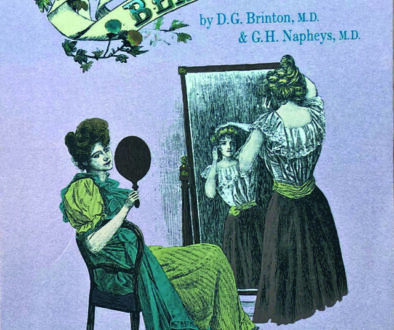Gardening with Ornamental Grasses
The New Wave Comes Ashore

Over the past 50 years, ornamental grasses have slowly been gaining favor among gardeners. I was first smitten with this group of plants as a child, long before I began to seriously study landscape design in the early 1980’s. As a beginning gardener, I was intrigued by their texture and ease with which the gentlest of breezes gave them motion. When I came across designs by Wolfgang Oehme and James Van Sweden featuring bold sweeps of them combined with colorful perennials, I was hooked! In fact, their design style was termed the “New Wave” of Garden Design. Still, many gardeners resisted the “New Wave”, viewing ornamental grasses more as weeds. Even today, I fear many have yet to recognize their design potential. I hope I can shed a little light on how best to use them in a garden!
Perhaps it would be appropriate to first understand what defines an ornamental grass. In its most simplistic form, it can be a true grass of the family Poaceae, a sedge in the family Cyperaceae, or a rush in the family Juncaceae. The plant has an attractive architectural form, flower, or foliage from spring to frost and often retains its form for winter interest. Most feature a very deep and extensive root system. This root system is in stark contrast to many turf grasses. For example, roots of Switch Grass (Panicum virgatum) can reach depths of eleven feet, while Kentucky Blue Grass exhibits a more restrained six to eight inches. Thus, many species can endure extended periods of drought while remaining ornamental. This also highlights why so many ornamental grasses are difficult to transplant or divide!

Beyond being tough and attractive, ornamental grasses provide a number of useful design solutions for the garden. They are very effective when used in unifying sweeps or masses and interplanted with various perennials, creating a meadow-like appearance. Lower growing grasses that are clump forming, such as Prairie Dropseed (Sporobolus heterolepis) are ideal for creating a fine textured base against which coarser textured and colorful perennials can be displayed. At Olbrich Botanical Gardens in Wisconsin, the pink Cone Flower (Echinacea pallida) and yellow Tickseed (Coreopsis sp.) provide points of seasonal color with the Sporobolus as a backdrop.
This design method is effective for taller grasses as well, with the gardener simply needing to incorporate perennials from tall grass prairies. Feather Reed Grass (Calamagrostis x acutiflora ‘Karl Foerster’) produces five-feet-tall pink plumes in June that turn tan come August over plants measuring only two to three feet wide. When used in large masses, the plants not only resemble graceful dancers as they sway to the beat of a summers’ breeze, but they look even more magical when intermingled with masses of tall perennials, including the pink-flowered Joe Pye Weed (Eutrochium purpureum) or the yellow blooms of Giant Black-eyed Susan (Rudbeckia maxima). Additional useful plants for intermingling with tall grasses include the purple flowered New York Ironweed (Vernonia noveboracensis) or the bold foliaged Prairie Dock (Silphium terebinthinaceum) with its tall wands of yellow blooms. It is merely up to the gardener’s imagination!


There are many Ornamental Grasses that even stretch to heights beyond five feet. These plants can provide screening, musical qualities from the rustling of foliage in the breeze, and an enhanced visual depth to the garden. Visual depth is a little used tool for gardens, since many still think of using plants in a ‘stacked fashion’ with the shortest plants in the front and the tallest to the back. This easily becomes a boring design scheme! Adding a few taller plants in the foreground creates a more exciting arrangement, since it partially blocks your view, creating depth and mystery because the entire space cannot be viewed at once. In a presentation I attended in the early 1980’s by Oehme and Van Sweden, they touted using the largest grass possible in small garden spaces, maintaining that the act of blocking views made the space appear larger. It also breaks up the static monotony of short to tall! A classic species for creating depth is Molinia caerulea ‘Windspiel, whose wispy stems of inflorescences stretch to seven to eight feet tall providing a transparent veil and a vertical mark by which one can measure distance—making the garden appear larger in the process.

Ornamental grasses can also have a spreading habit that serves the garden well as a groundcover or green mulch. Pennsylvania Sedge (Carex pensylvanica) is a marvelous native sedge for light shade with enchanting ground covering qualities. From two-inch plugs planted twelve inches apart, it grows to maturity in three years. This plant can actually be mowed once a month if the gardener is so inclined or it can be allowed to grow to its full sixteen inches or so in length. What I find intriguing is the patterns the foliage creates when allowed to grow in mass without mowing. The plant only reaches eight inches or so in height with an extra eight inches of foliage trailing outward and blending into neighboring foliage, producing an effect similar to currents of water. Fascinating!
Another great plant for use as a groundcover in light shade is Hakone Grass (Hakonechloa macra). Hakone Grass is native to Japan; the plant spreads slowly to form a very attractive 24-inch-tall groundcover. The foliage is effective not only for texture and utility, but for the layered effect it provides. With a bit of imagination, the foliage resembles the appearance of a waterfall, repeating references to water! The form ‘Aureola’ grows to eighteen inches tall and features green and yellow variegated foliage, while ‘All Gold’ features chartreuse foliage and grows to 18 inches without any variegation. Once again, one or two plants will not provide the impact or grace that 20 will create, emphasizing the importance of planting in numbers!

Rain Gardens and areas allowed to flood during rainstorms are an increasingly important environmental element for gardens. These areas collect stormwater and allow it to slowly percolate into the soil, recharging water tables and removing pollutants in the process. Once again, ornamental grasses provide an important design tool since some can readily tolerate a week or better of persistent rain followed by several weeks of drought. Tussock Sedge (Carex stricta), is native to North America and is a true stalwart of wet sites. I first discovered the plant in a boggy area at my parent’s home around 1965. I was eight at the time and moved the plant to a location where it could be better appreciated. When I sold the house in 2018, it still had a fantastic form, despite the fact it had never been divided. In boggy or inundated areas, Tussock Sedge tolerates sun or shade while in drier areas it prefers light shade. Talk about a tough, yet graceful and low maintenance plant!
Plants obviously go through waves of popularity, yet I feel ornamental grasses are still in their formative years of popularity. There is still much to be learned on how to properly incorporate them into designs with perennials and woody shrubs. I once had the honor of meeting Wolfgang Oehme at an awards dinner and had the opportunity to chat with the person who had so changed my perspective on garden design. He was very humble, yet his impact (on me and I am certain on many others) will extend far beyond my lifetime. Perhaps it is no longer a new wave of garden design, but as the wave continues to come ashore, it will become an ever-expanding and lasting tool in the garden designer’s toolbox! ■



